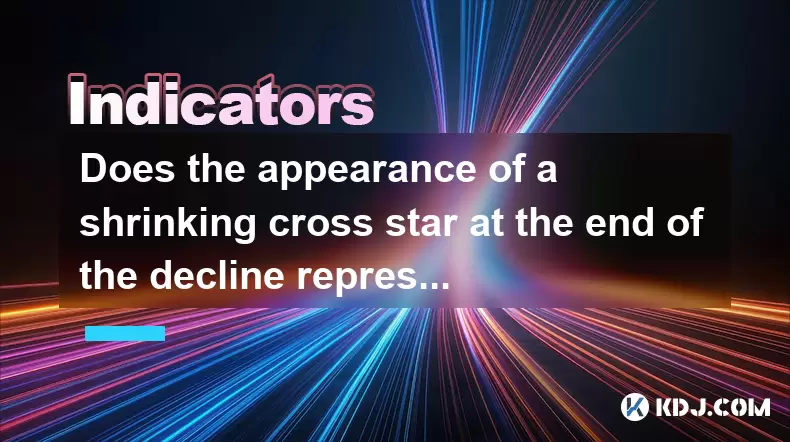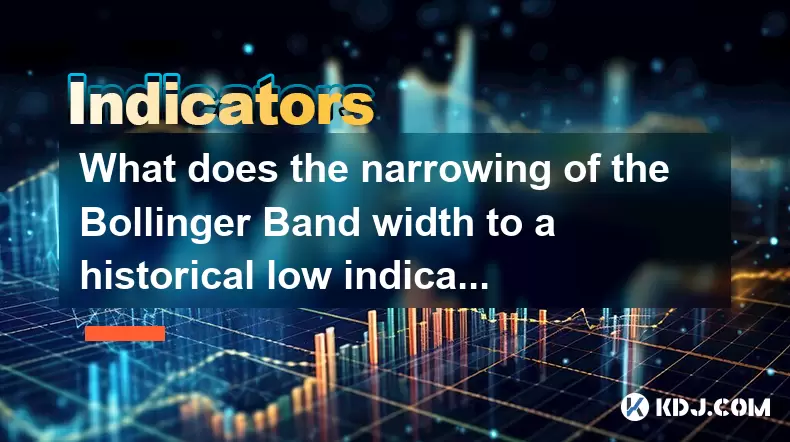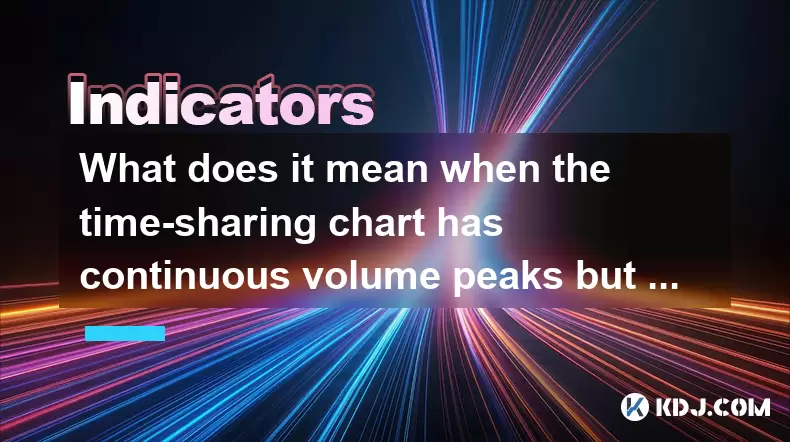-
 Bitcoin
Bitcoin $103,838.1703
5.33% -
 Ethereum
Ethereum $2,364.7328
10.94% -
 Tether USDt
Tether USDt $1.0007
0.03% -
 XRP
XRP $2.0950
9.02% -
 BNB
BNB $634.7170
5.25% -
 Solana
Solana $142.0264
11.70% -
 USDC
USDC $1.0000
0.00% -
 TRON
TRON $0.2728
5.18% -
 Dogecoin
Dogecoin $0.1598
10.80% -
 Cardano
Cardano $0.5655
9.94% -
 Hyperliquid
Hyperliquid $37.8554
11.16% -
 Sui
Sui $2.7196
17.77% -
 Bitcoin Cash
Bitcoin Cash $458.7795
4.67% -
 Chainlink
Chainlink $12.4271
12.53% -
 UNUS SED LEO
UNUS SED LEO $9.0769
0.74% -
 Avalanche
Avalanche $17.7117
12.43% -
 Stellar
Stellar $0.2392
9.83% -
 Toncoin
Toncoin $2.8765
9.58% -
 Shiba Inu
Shiba Inu $0.0...01131
11.69% -
 Litecoin
Litecoin $84.0378
9.79% -
 Hedera
Hedera $0.1456
14.65% -
 Monero
Monero $305.0298
5.16% -
 Ethena USDe
Ethena USDe $1.0006
0.03% -
 Dai
Dai $1.0001
0.02% -
 Polkadot
Polkadot $3.3522
10.31% -
 Bitget Token
Bitget Token $4.0785
3.25% -
 Uniswap
Uniswap $6.7682
13.08% -
 Pepe
Pepe $0.0...09557
13.29% -
 Pi
Pi $0.5253
9.79% -
 Aave
Aave $250.5247
16.65%
Does the appearance of a shrinking cross star at the end of the decline represent a signal to stop the decline?
A shrinking cross star in crypto trading may signal a potential bullish reversal after a downtrend, but confirmation with volume and other indicators is crucial.
Jun 24, 2025 at 12:14 am

Understanding the Shrinking Cross Star Pattern
In the world of cryptocurrency trading, candlestick patterns play a crucial role in technical analysis. One such pattern is the shrinking cross star, which often appears at the end of a downtrend. This pattern consists of a candle with a small body, typically appearing after a series of bearish candles, and is characterized by long upper and lower shadows. The presence of this formation may indicate indecision among traders and could suggest a potential reversal.
The shrinking cross star is also known as a doji or spinning top, depending on the length of its wicks. When it forms after a significant decline, it can signal that the selling pressure is weakening and buyers might be stepping in. However, it's important to note that this pattern alone should not be used as a definitive buy signal without confirmation from other indicators or price actions.
Interpreting the Market Psychology Behind the Pattern
When a shrinking cross star appears at the end of a downtrend, it reflects a shift in market sentiment. During a decline, sellers dominate the market, pushing prices lower. However, when a candle with a small body forms amidst this downward movement, it suggests that neither buyers nor sellers are in control.
This equilibrium between bulls and bears is represented by the small real body and long shadows, indicating that prices tested both higher and lower during the period but closed near the opening price. In the context of cryptocurrency markets, where volatility is high and sentiment can change rapidly, such a pattern can serve as an early warning sign that the trend may be losing momentum.
It’s essential to monitor volume levels alongside this pattern. A shrinking cross star accompanied by declining volume may reinforce the idea that the downtrend is weakening. Conversely, if the volume remains high, it might suggest that the bearish trend still has strength behind it.
How to Confirm the Reversal Signal
While the appearance of a shrinking cross star may hint at a potential bottoming out of the price, confirmation is key before making any trading decisions. Traders often look for the next candle following the cross star to close above the high of the previous bearish candle. This breakout action can confirm that buying pressure is taking over.
Another method of validation involves using support levels or trendlines. If the shrinking cross star forms near a significant support zone or a Fibonacci retracement level, the probability of a bounce increases. Additionally, incorporating tools like the Relative Strength Index (RSI) or Moving Average Convergence Divergence (MACD) can provide further insight into whether the asset is oversold or showing signs of a reversal.
For example, if the RSI is below 30 and a shrinking cross star forms, it may strengthen the case for a bullish reversal. Similarly, a bullish crossover in the MACD line could act as a confirming signal.
Practical Steps to Trade Based on This Pattern
If you're considering entering a trade based on the appearance of a shrinking cross star at the end of a downtrend, follow these steps:
- Identify the pattern: Look for a candle with a small body and long upper and lower shadows after a clear downtrend.
- Check for confluence: Ensure that the pattern coincides with key support levels, Fibonacci zones, or oversold conditions.
- Wait for confirmation: Observe the next candle to see if it closes above the high of the previous bearish candle.
- Set entry point: Enter a long position once confirmation is visible, preferably with increased volume.
- Place stop-loss: Set a stop-loss just below the low of the shrinking cross star to manage risk.
- Target profit: Use previous resistance levels or extension tools like Fibonacci extensions to determine take-profit points.
By following these steps, traders can increase their chances of catching a potential reversal while minimizing risks associated with false signals.
Common Pitfalls and Misinterpretations
One common mistake traders make is acting too quickly on the appearance of a shrinking cross star without waiting for confirmation. Since this pattern indicates indecision rather than a clear reversal, entering a trade prematurely can lead to losses if the downtrend resumes.
Another pitfall is ignoring broader market conditions. For instance, even if a shrinking cross star appears in a cryptocurrency chart, if there's negative news affecting the entire market, the pattern may fail to produce a reversal. Always consider macroeconomic events, exchange announcements, or regulatory developments that could override technical signals.
Additionally, some traders rely solely on candlestick patterns without integrating other analytical tools. To improve accuracy, always combine candlestick analysis with volume, moving averages, or oscillators to filter out weak signals and focus on high-probability setups.
Frequently Asked Questions
Q: Can the shrinking cross star appear in uptrends as well?
Yes, the shrinking cross star can appear in uptrends and may signal a potential reversal to the downside. In such cases, it’s often referred to as a "bearish cross star" and should be analyzed similarly, with attention to volume and confirmation.
Q: Is the shrinking cross star more reliable in certain timeframes?
The reliability of the shrinking cross star depends on the timeframe being analyzed. It tends to be more meaningful on higher timeframes like the 4-hour or daily charts compared to shorter ones like 5-minute or 15-minute intervals, where noise and volatility can create misleading signals.
Q: How does the shrinking cross star differ from a hammer or hanging man candlestick?
A hammer or hanging man candlestick has a small body with a long lower shadow and little to no upper shadow. The shrinking cross star, on the other hand, has both upper and lower shadows of similar length. While hammers can signal bullish reversals, the cross star emphasizes indecision rather than a directional bias.
Q: Should I use this pattern exclusively for trading decisions?
No, the shrinking cross star should never be used in isolation. It works best when combined with other technical indicators, volume analysis, and sound risk management strategies to improve the probability of successful trades.
Disclaimer:info@kdj.com
The information provided is not trading advice. kdj.com does not assume any responsibility for any investments made based on the information provided in this article. Cryptocurrencies are highly volatile and it is highly recommended that you invest with caution after thorough research!
If you believe that the content used on this website infringes your copyright, please contact us immediately (info@kdj.com) and we will delete it promptly.
- Bitcoin Scaling Showdown: Lightning Network, Sztorc, and the Future of Payments
- 2025-06-24 04:25:12
- Cathie Wood, ARK Invest, and Circle Shares: A Wild Ride on the Stablecoin Wave
- 2025-06-24 04:25:12
- Crypto Penny Coins: Hunting for Monster Gains in 2025
- 2025-06-24 02:45:12
- Ethereum Whale Dips Into Crashing ETH: Smart Move?
- 2025-06-24 02:25:12
- Shiba Inu vs. Rival Tokens: Navigating the Cryptocurrency Craze in NYC
- 2025-06-24 03:10:22
- Stablecoin Scramble: Market Structure and Bill Passage in the Crypto Wild West
- 2025-06-24 02:45:12
Related knowledge

How to interpret that the time-sharing chart shows "volume and price rise together" but the MACD red column shortens?
Jun 24,2025 at 01:08am
Understanding the Concept of 'Volume and Price Rise Together'In cryptocurrency trading, when a time-sharing chart shows that both volume and price rise together, it is typically interpreted as a sign of strong buying pressure. This means more traders are entering long positions, pushing the price higher while increasing the trading volume. This phenomen...

Is it contradictory that the moving average system is arranged in a bullish pattern but the DMI shows a decline in trend strength?
Jun 23,2025 at 11:43pm
Understanding the Moving Average and DMI RelationshipIn cryptocurrency trading, technical analysis plays a crucial role in identifying potential trends and making informed decisions. Two of the most commonly used indicators are the Moving Average (MA) and the Directional Movement Index (DMI). While both tools aim to provide insight into market direction...

How to interpret that the Williams indicator quickly turns back in the overbought area but does not fall below the 50-axis?
Jun 24,2025 at 02:01am
Understanding the Williams %R Indicator in Cryptocurrency TradingThe Williams %R indicator, often referred to as Williams Percent Range, is a momentum oscillator used by traders to identify overbought or oversold conditions in financial markets, including cryptocurrency. It ranges from 0 to -100, where values above -20 are considered overbought and thos...

What is the significance of the gap formed by the gap opening not being filled within five days?
Jun 23,2025 at 09:42pm
Understanding Gaps in Cryptocurrency TradingIn the world of cryptocurrency trading, a gap refers to a situation where the price of an asset jumps from one level to another without any trading activity occurring between those two levels. This often happens over weekends or holidays when the market is closed, and significant news or events occur that impa...

What does the narrowing of the Bollinger Band width to a historical low indicate?
Jun 24,2025 at 02:35am
Understanding Bollinger Bands and Their Role in Technical AnalysisBollinger Bands, developed by John Bollinger in the 1980s, are a popular technical analysis tool used to measure market volatility. They consist of three lines: a simple moving average (SMA) in the center, typically over a 20-period setting, and two outer bands that are set at a standard ...

What does it mean when the time-sharing chart has continuous volume peaks but the price fluctuation is not large?
Jun 24,2025 at 03:49am
Understanding the Time-Sharing Chart in Cryptocurrency TradingIn cryptocurrency trading, time-sharing charts are crucial tools that help traders monitor real-time price movements and volume activity. These charts display data within specific time intervals—such as 1-minute, 5-minute, or 15-minute windows—and allow for granular analysis of market behavio...

How to interpret that the time-sharing chart shows "volume and price rise together" but the MACD red column shortens?
Jun 24,2025 at 01:08am
Understanding the Concept of 'Volume and Price Rise Together'In cryptocurrency trading, when a time-sharing chart shows that both volume and price rise together, it is typically interpreted as a sign of strong buying pressure. This means more traders are entering long positions, pushing the price higher while increasing the trading volume. This phenomen...

Is it contradictory that the moving average system is arranged in a bullish pattern but the DMI shows a decline in trend strength?
Jun 23,2025 at 11:43pm
Understanding the Moving Average and DMI RelationshipIn cryptocurrency trading, technical analysis plays a crucial role in identifying potential trends and making informed decisions. Two of the most commonly used indicators are the Moving Average (MA) and the Directional Movement Index (DMI). While both tools aim to provide insight into market direction...

How to interpret that the Williams indicator quickly turns back in the overbought area but does not fall below the 50-axis?
Jun 24,2025 at 02:01am
Understanding the Williams %R Indicator in Cryptocurrency TradingThe Williams %R indicator, often referred to as Williams Percent Range, is a momentum oscillator used by traders to identify overbought or oversold conditions in financial markets, including cryptocurrency. It ranges from 0 to -100, where values above -20 are considered overbought and thos...

What is the significance of the gap formed by the gap opening not being filled within five days?
Jun 23,2025 at 09:42pm
Understanding Gaps in Cryptocurrency TradingIn the world of cryptocurrency trading, a gap refers to a situation where the price of an asset jumps from one level to another without any trading activity occurring between those two levels. This often happens over weekends or holidays when the market is closed, and significant news or events occur that impa...

What does the narrowing of the Bollinger Band width to a historical low indicate?
Jun 24,2025 at 02:35am
Understanding Bollinger Bands and Their Role in Technical AnalysisBollinger Bands, developed by John Bollinger in the 1980s, are a popular technical analysis tool used to measure market volatility. They consist of three lines: a simple moving average (SMA) in the center, typically over a 20-period setting, and two outer bands that are set at a standard ...

What does it mean when the time-sharing chart has continuous volume peaks but the price fluctuation is not large?
Jun 24,2025 at 03:49am
Understanding the Time-Sharing Chart in Cryptocurrency TradingIn cryptocurrency trading, time-sharing charts are crucial tools that help traders monitor real-time price movements and volume activity. These charts display data within specific time intervals—such as 1-minute, 5-minute, or 15-minute windows—and allow for granular analysis of market behavio...
See all articles
























































































